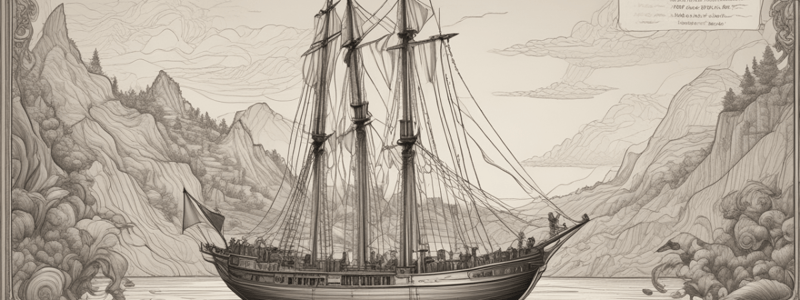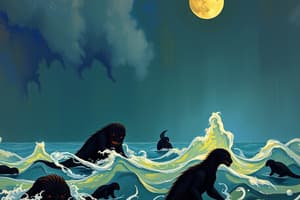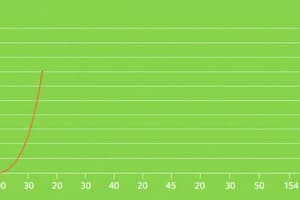Podcast
Questions and Answers
What is the primary function of the exposition in a plot?
What is the primary function of the exposition in a plot?
- To resolve the conflict and bring the story to a close
- To introduce the characters and setting, and establish the main conflict (correct)
- To develop the conflict and create suspense
- To create a turning point in the story
Which part of the plot is responsible for building interest or suspense?
Which part of the plot is responsible for building interest or suspense?
- Rising Action (correct)
- Climax
- Resolution
- Exposition
What is the primary characteristic of the climax in a plot?
What is the primary characteristic of the climax in a plot?
- It is the end of the story
- It is the turning point of the story where the main character changes (correct)
- It is the beginning of the story
- It is the point where the conflict is resolved
What is the primary function of the falling action in a plot?
What is the primary function of the falling action in a plot?
What is the purpose of the resolution in a plot?
What is the purpose of the resolution in a plot?
Flashcards are hidden until you start studying
Study Notes
Understanding Plot Diagram
- Plot is the organized pattern or sequence of events that make up a story, consisting of a series of related incidents.
- Every plot is divided into five essential elements: Exposition, Rising Action, Climax, Falling Action, and Resolution.
Exposition
- Occurs at the beginning of a story, introducing characters, setting, and the main conflict (main problem).
- Provides background information and establishes the story's foundation.
Rising Action
- Develops the conflict(s), building interest or suspense, and creates tension.
- The story begins to unfold, and the plot thickens.
Climax
- The turning point of the story, where the main character faces a conflict.
- The main character undergoes a significant change or transformation.
Falling Action
- Ties up loose ends, resolving the conflict(s) and climax.
- The story begins to wrap up, and the plot reaches its conclusion.
Resolution
- The story comes to a reasonable ending, providing closure.
- The final outcome or consequence of the story's events.
Studying That Suits You
Use AI to generate personalized quizzes and flashcards to suit your learning preferences.




